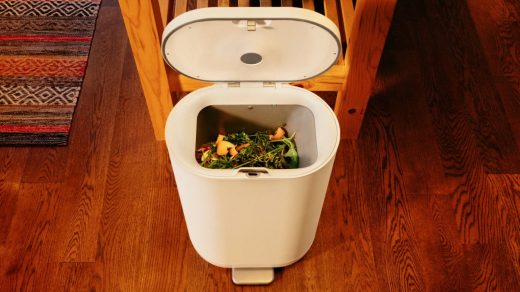Nest’s cofounder just designed the world’s fanciest bin for food scraps
In the typical household, an embarrassing amount of food goes to waste. The USDA estimates that nearly a third of the food supply in the U.S. goes uneaten, with the average family dumping hundreds of pounds of food in the trash annually. Most of that wasted food ends up rotting away in landfills, pumping methane into the atmosphere and exacerbating climate change. Add to that the carbon emissions involved in its farming, transportation, cooling, and marketing, uneaten food is responsible for an estimated 8% of global emissions.
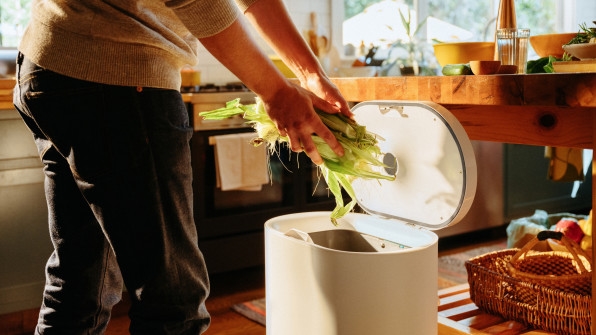
Despite being a global problem with existential ramifications, food scraps tend to be an afterthought in most kitchens, remorselessly slopped into the garbage can at the end of a meal. Mill, a new kind of food scrap-specific waste bin, hopes to change that, and to help chip away at the global problem food waste creates.
Think of Mill as a big food dehydrator combined with an oversized coffee grinder. Using an automated system that slowly dries and grinds food scraps, Mill turns everything from uneaten meals to bones to eggshells to expired condiments into a nutrient-rich powder that can be mailed back to the company for reuse as animal feed.
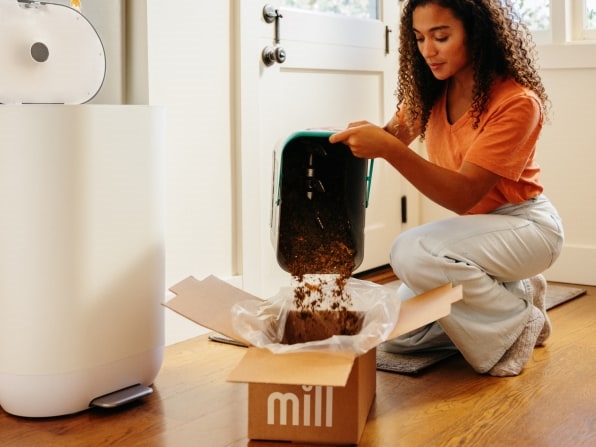
“It has all the nutrients, the calories, the protein of the stuff we were going to eat,” says Matt Rogers, CEO of Mill. “We spend a lot of time, money, energy, and land to grow this food, so we should preserve it.”
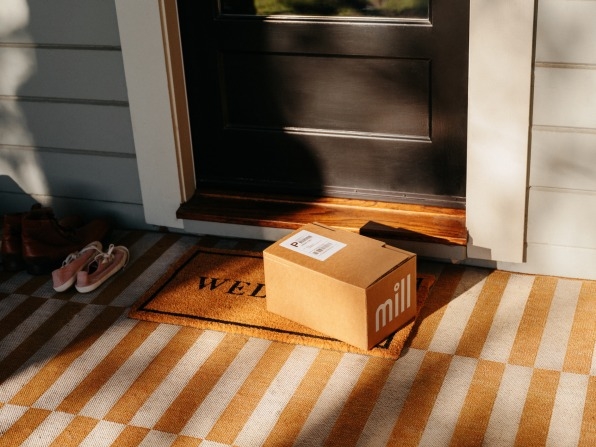
A cofounder of the smart thermostat maker Nest and a former Apple engineer, Rogers approached the problem of food waste from the perspective of the typical food waster, otherwise known as everyone. He says people inherently understand that wasting food is bad, but most people don’t know what else to do with it. “Everyone’s told to clean their plate and eat their food. No one feels good about waste. The problem today is it’s really hard to do anything different than throw it away,” he says.

Food waste is a known problem, however, and some cities have made collecting it a part of their municipal utilities, including San Francisco, Seattle, and New York City. “But even in those cities, people still put their food waste in the trash or down the sink because it’s really hard to deal with,” Rogers says.
Mill is proposing a slick alternative. Designed to look like a normal two-foot-tall garbage can, Mill is outfitted with a foot-operable lid, grinding paddles, and an internal heat source that dehydrates food, which is typically 80 to 90% water. Programmable to start on command or on schedule, Mill is intended to operate overnight, simultaneously drying and grinding food over the course of several hours. A charcoal-based filter eliminates any odor. When the process is done, the volume of food waste has been reduced by nearly 90%.
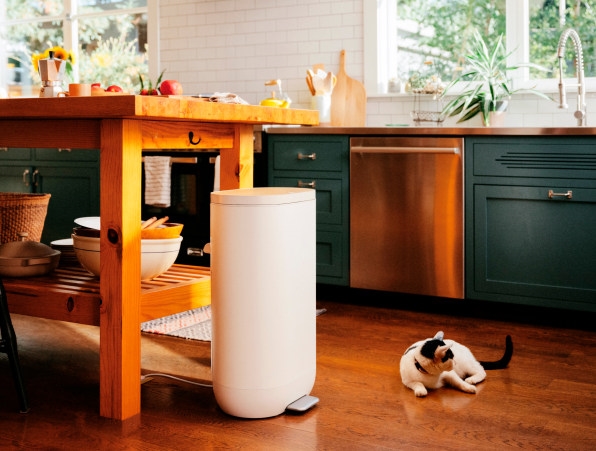
When the bin is full, roughly once or twice per month for the average household, the dried food grounds are emptied into a lined and prepaid shoebox-sized mailer and sent back to Mill through the U.S. Postal Service. Mill has partnered with two processing facilities that purchase and turn all this dried food into a chicken feed ingredient, filtering out any errant forks or inorganic materials that accidentally get tossed in the bin. Instead of rotting in a landfill and accelerating climate change, the nutrients from household food scraps are returned to the food cycle, all starting at $33 a month.
Making it all work, though, is a bit more complex. “When you think about it, the combinations of kitchen scraps that people generate every day are infinite. I’ve got peanut butter and yogurt one day, and corn husks and expired flour the next day. It’s super tricky,” says Kristen Virdone, Mill’s head of product.
Tackling those infinite combinations of food took a few years of development, but Virdone and her team focused first on how the bin would look and how people would interact with it. “We started thinking about just the experience, not the inputs, not the science. Just what do we want people to experience in their homes,” she says.
The priority was making it as simple as possible. Rather than a washing machine-like system where users select a cycle depending on the type of clothes they’re washing, Mill is basically either on or off, dehydrating at between 175 and 220 degrees Fahrenheit over the course of hours and slowly grinding the food over and over again until the bin is emptied. Part of the simplicity was making sure it looked like a normal bin in a normal kitchen.
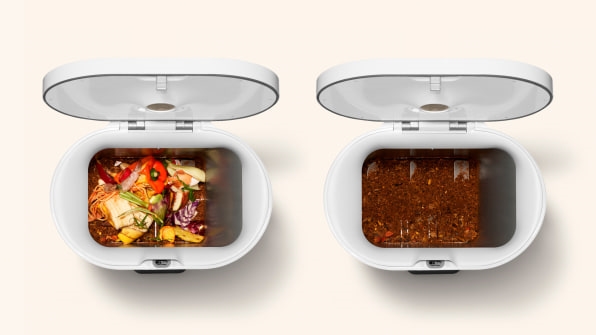
“We could have made it look like anything,” Virdone says. “There was no reason it had to look like a trash can. But when you’re trying to ask people to engage in behavior change, you don’t want to put a lot of mental load on them.”
Rogers says the goal with Mill is to help people reduce their impact easily, and to use a Nest-like app to show them how much food they’re tossing and how much they’re diverting from landfills. He’s also trying to mine value from waste streams that typically get overlooked.
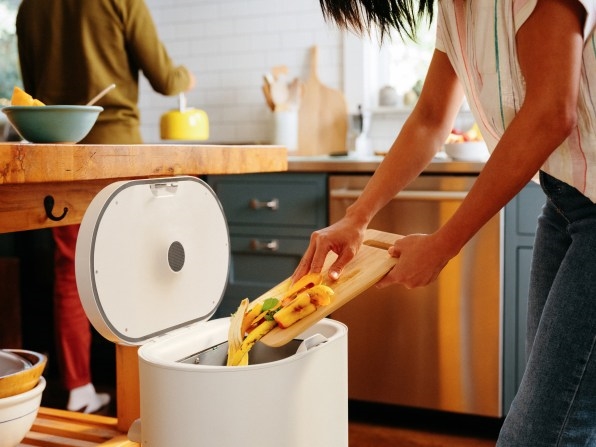
If this all sounds like a too-elaborate approach to a problem many people solve with a simple compost bin, Rogers has two words: fruit flies. As a former countertop composter himself, he has known this pernicious problem firsthand. “When the fruit flies moved in, we had to stop,” he says.
Mill is an attempt at making it easy for well-meaning but fruit-fly-averse people to turn their food waste stream into something beneficial. Rogers says Mill is currently in conversations with municipalities about the potential of integrating the company’s collection and logistics approach into conventional garbage pickups. “We think over time there’s real partnership opportunities with municipalities around the country to provide this as a benefit to residents, as a way of preventing waste, and to have a better experience at home,” he says. “Why does the waste service start at the curb? Why couldn’t it go into your kitchen?”
Mill is now available for purchase, and will begin shipping nationwide this spring.
(25)

